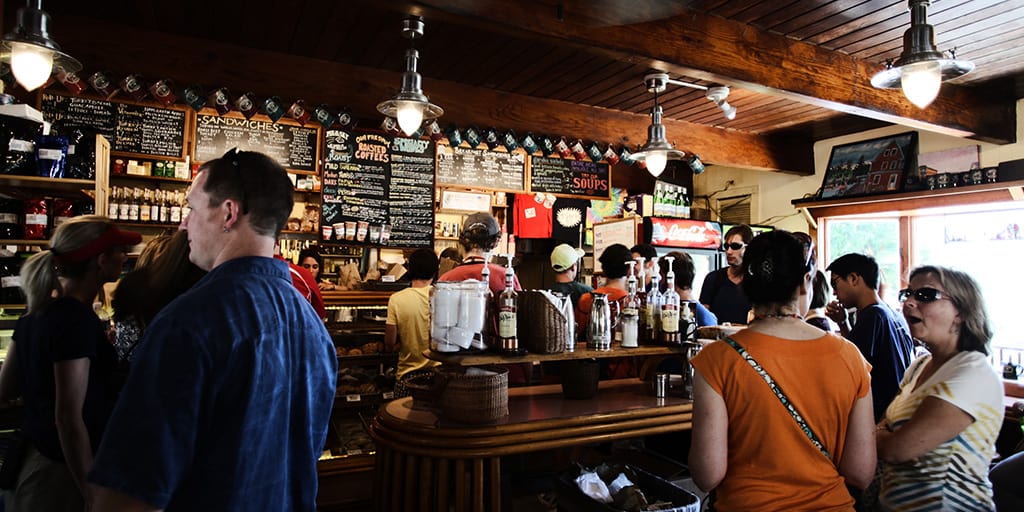It’s no secret that it’s much less expensive to keep an existing customer than to find a new one. For this reason, companies generally emphasize building brand loyalty which marketing specialist Seth Godin defines as “ the set of expectations, memories, stories, and relationships that, taken together, account for a customer’s decision to choose one...
It’s no secret that it’s much less expensive to keep an existing customer than to find a new one.
For this reason, companies generally emphasize building brand loyalty which marketing specialist Seth Godin defines as “ the set of expectations, memories, stories, and relationships that, taken together, account for a customer’s decision to choose one product or service over another.”
In other words, brand loyalty is based on an authentic connection the consumer makes with a company’s product or services, a kind of marriage, in fact, that persists and evolves over time so long as both parties are satisfied.
Think Starbucks, for example, which has chosen to focus its attention on savvy customer-centric loyalty initiatives rather than individual transactions. The company’s continuing efforts to forge a relationship which is mutually beneficial to itself and its customers have sustained the chain’s popularity and spurred its economic growth.
Three Important Benefits of Brand Loyalty
Repeat Purchasing
12 – 15% of customers are loyal to a single company. And these same customers are responsible for 55-70% of a company’s sales. In other words, even a small group of brand enthusiasts can help a business’s bottom line. Imagine what could happen when a business gains an even higher percentage of brand loyalists.
Take Netflix, for instance, who has recently posted a 24% sales gain thanks to a loyal following of 60 million users. The streaming service, known for exceeding customers’ expectations, has successfully maintained – and grown – its followers, warding off competition and improving its net worth in the process.
Word of Mouth
Loyal customers are valuable not only because they are repeat customers but also because they build word of mouth. People are, on average, twice as likely to pay attention to friend, family, and colleague recommendations than from any other sources.
Case in point: Etsy, the company that allows consumers to buy unique, handcrafted items directly from people all over the world. The company made the decision long ago to forego traditional advertising methods, instead relying solely on word of mouth, a move that has paid off very well. As of this year, the company is valued at $1.2 billion.
Bottom line: A single repeat customer could be worth many, many new customers, not to mention jumps in revenue and net worth.
Product Positioning
Determining your brand’s position is key to creating – and maintaining – brand loyalty.
A brand’s position – what your brand stands for and what the customer can expect from you – will be the first thing a customer thinks about when he or she hears your name.
Consider Nike whose famous and motivational “Just Do It” tag line clarifies the company’s position. When you think of Nike, you think of all things athletic: running, biking, basketball. And, of course, Nike has the products to allow anyone to participate in (or just do) those activities, making its products popular with people from every background.
Strong brand loyalty has enabled the company to shift its product focus into an attitude and a lifestyle which consumers everywhere seek out.
Three Steps to Efficiently Measure Brand Loyalty
Screen and segment first thing
Begin by screening and segmenting all responses, as the wrong mix of participants will likely invalidate your branding survey.
Consider asking demographic questions at either the beginning or the end of the survey.
Demographic questions are generally quick and easy to answer but may lead to drop out if they are the first thing participants see.
Likelihood to recommend
To gauge brand loyalty, use a Net Promoter Score survey – or one similar to it – and ask customers how likely they are to recommend your brand to friends or colleagues. Then compare your score against industry benchmarks.
Brandon Rocks, head of data science at Satmetrix, clearly identifies the various important benefits of using NPS to gauge brand loyalty: “A high Net Promoter Score means that a company is more likely to experience lower customer acquisition costs, greater customer lifetime value and, ultimately, more sustainable growth.”
Product Satisfaction
To better understand how satisfied customers are with the quality, value, or the features of a product or service, a survey can provide valuable information about brand satisfaction and product experience.
Customer satisfaction is fundamental measure of gauging a company’s performance no matter what service or product the company provides.
And, as with your Net Promoter Score, reading your results against industry benchmarks will help you better understand how you measure up against competitors and your industry.








